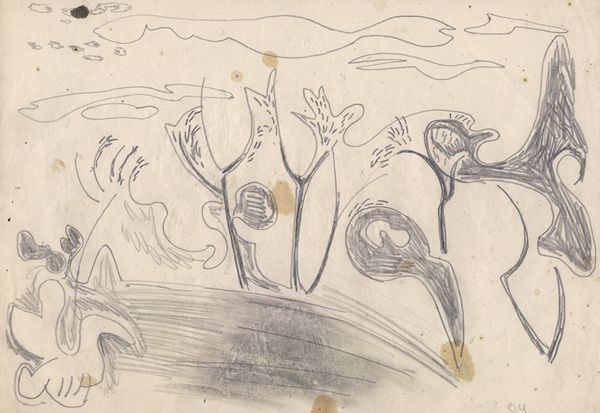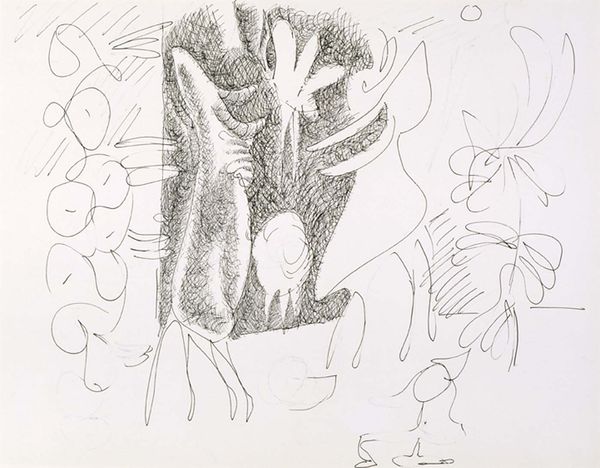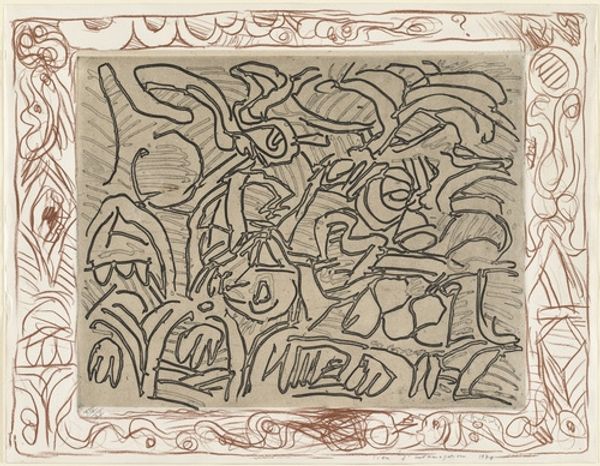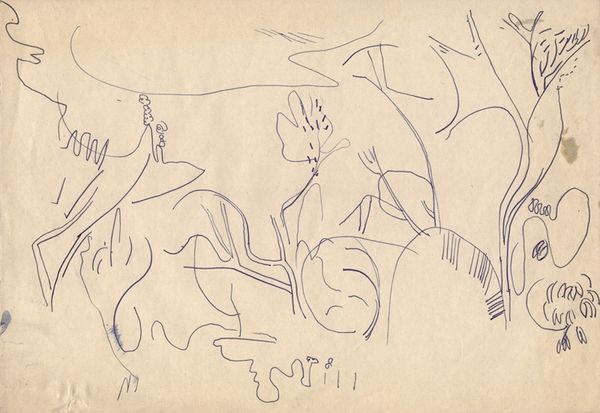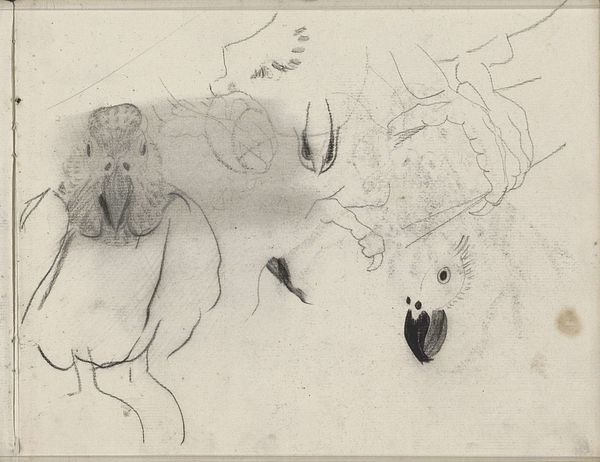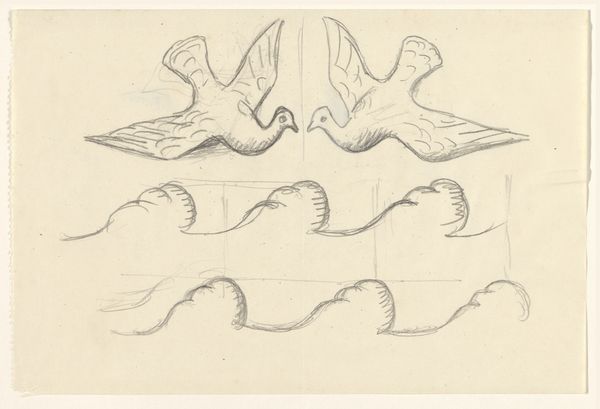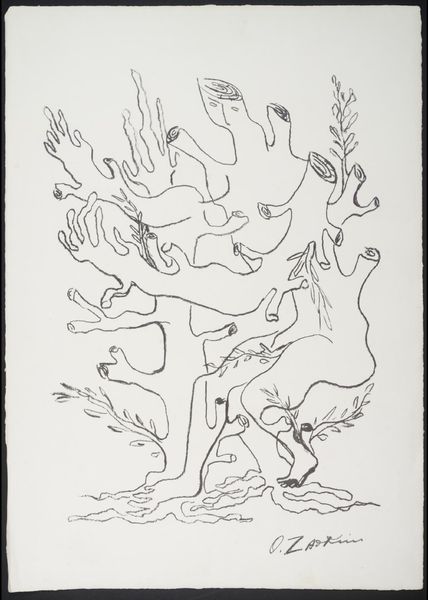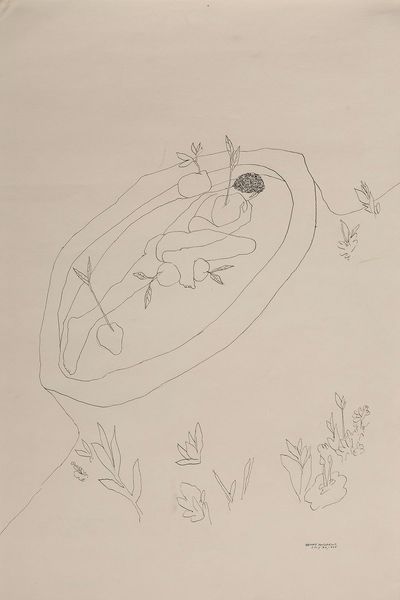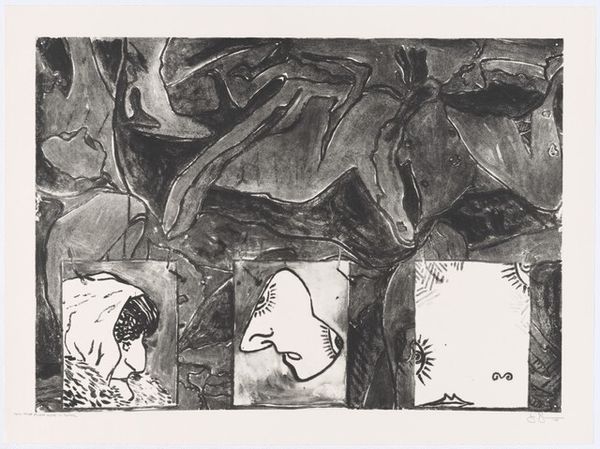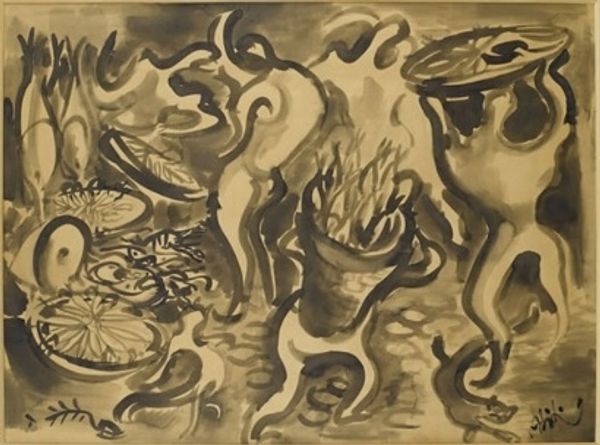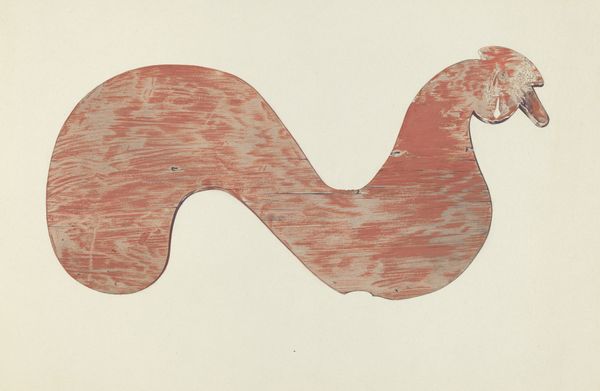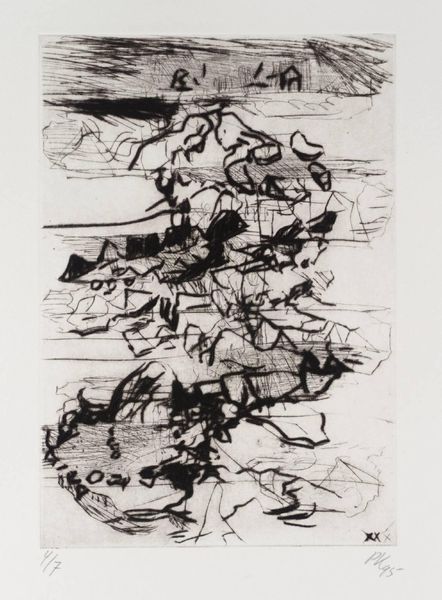
drawing, paper, ink
#
drawing
#
landscape
#
german-expressionism
#
paper
#
form
#
ink
#
geometric
#
expressionism
#
line
Copyright: Public Domain
Curator: Walter Ophey’s work, “Park island in the pond” is an ink and drawing on paper piece, here in the Städel Museum. Editor: It has an immediate quality of stillness to me. The thin, vertical lines create this sense of serene reflection, almost like a hushed secret revealed on paper. Curator: Ophey was a key figure in German Expressionism. His practice delved into how visual forms could mirror the tumultuous social landscape of his time, often hinting at themes of alienation. The bold strokes typical of the movement are present. Editor: I agree. While appearing quiet, I think, its stark lines also invoke the fracturing happening socially, politically, and even in people’s identities during that period. Are the simplified natural elements acting as reflections of this fracturing? Curator: Very insightful! Ophey's style embodies the push-pull dynamic of the era, one where geometric simplification reflects an environment that underwent an intensive mechanization. And that then touches and shapes every life of people. Editor: Looking closer, one also begins to question what this geometric styling does in creating its own unique natural setting. It isn’t necessarily representative but evocative. It seems Ophey almost invents the rules by which we view the landscape. Curator: Precisely. His landscapes should be contextualized within an emergent post-World War I Germany. You could see his focus on geometrical simplification not as an escape from reality but a new language to help cope with a radically changed society. The drawing does create new pathways to approach a new social and political setting. Editor: I see that new language reflected even in his approach to form here— everything seems reduced to its most elemental shape. The drawing on paper in and of itself highlights the act of trying to communicate, rather than represent an existing landscape. Curator: These shapes definitely open discussions about the visual vocabulary deployed within early 20th century artistic settings. Editor: So as an artifact from that time and social climate, the work also offers insights on themes such as reconstruction. Curator: Ultimately, it showcases an exploration into visual communication as itself a product of the tensions experienced and a visual path towards building a new, shared society. Editor: Exactly, so looking at it closely has widened my perspectives quite significantly. Curator: As it has for me as well, reminding us of Expressionism's continued resonance.
Comments
No comments
Be the first to comment and join the conversation on the ultimate creative platform.
